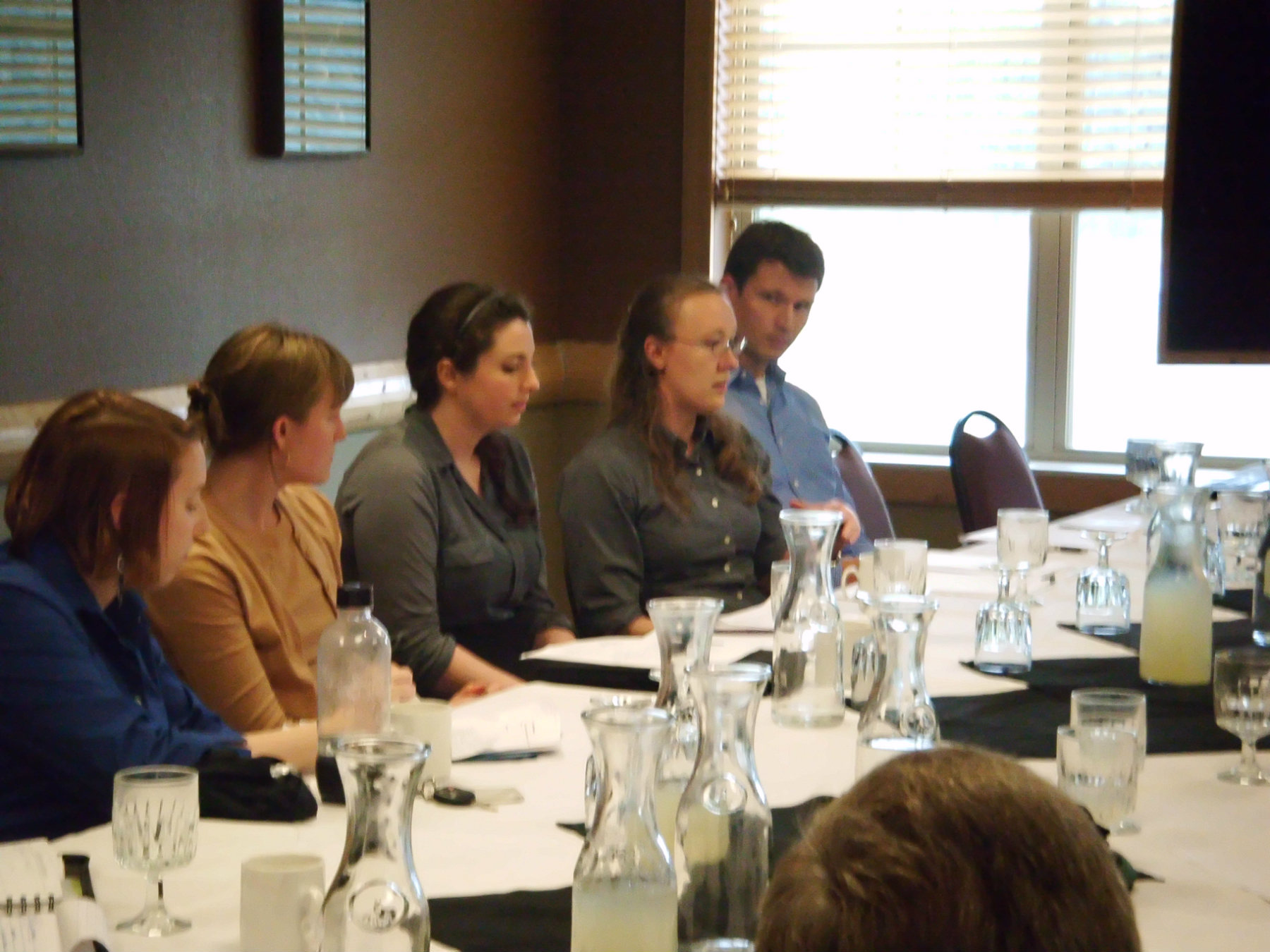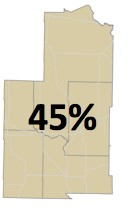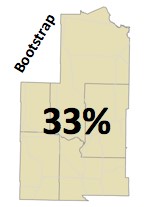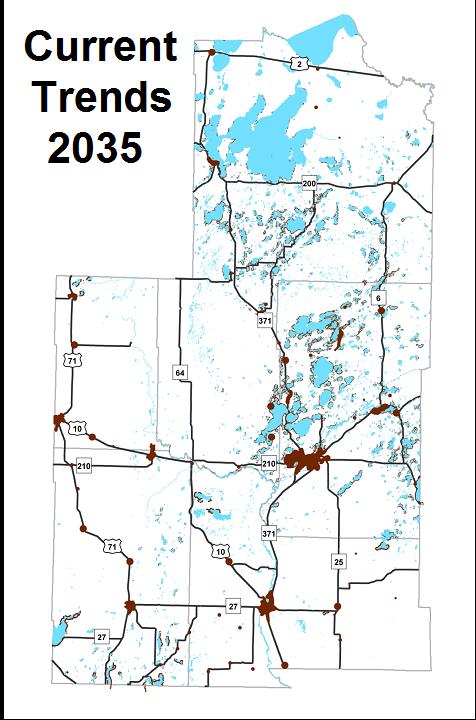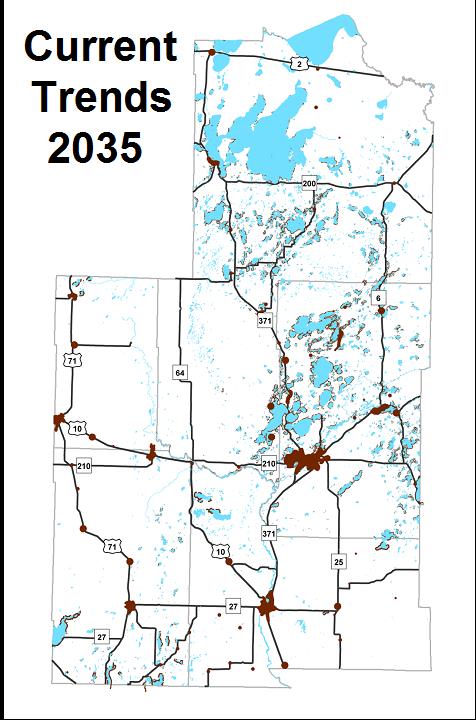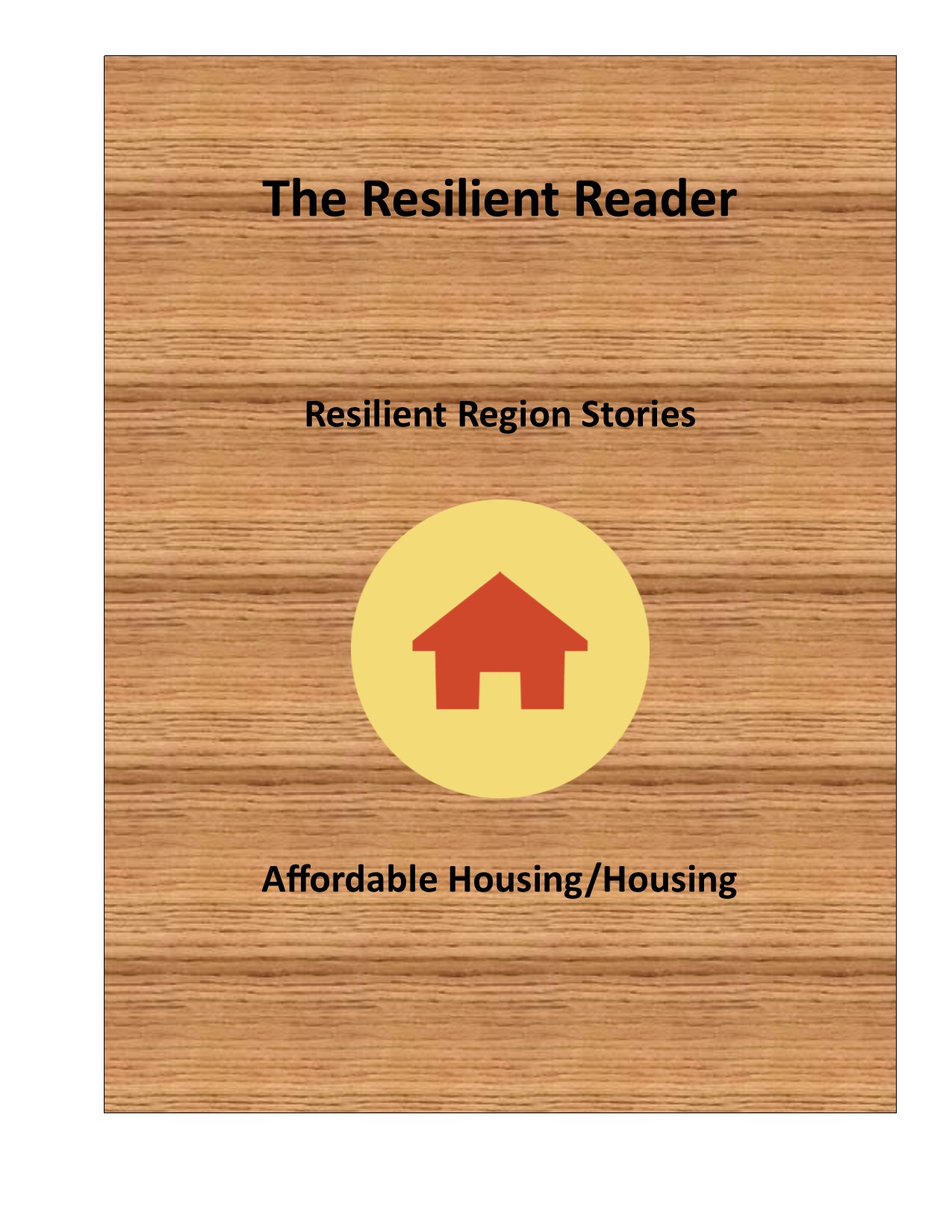Affordable Housing/Housing
Housing options can be a struggle for many people if they do not know what is available to them and what options they have when making an investment in their housing choices.
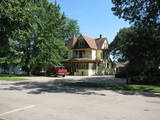 According to Wikipedia:
According to Wikipedia:
"Affordable housing is a very complex issue that deals with multiple funding sources, regulations, public and private partnerships, energy consumption and neighborhoods. In many cases housing is one of the largest investments a person will make in their lives. Some people prefer renting due to maintenance repairs while others want the flexibility of owning their own home. Whichever is preferred, education is the key to making a successful home.
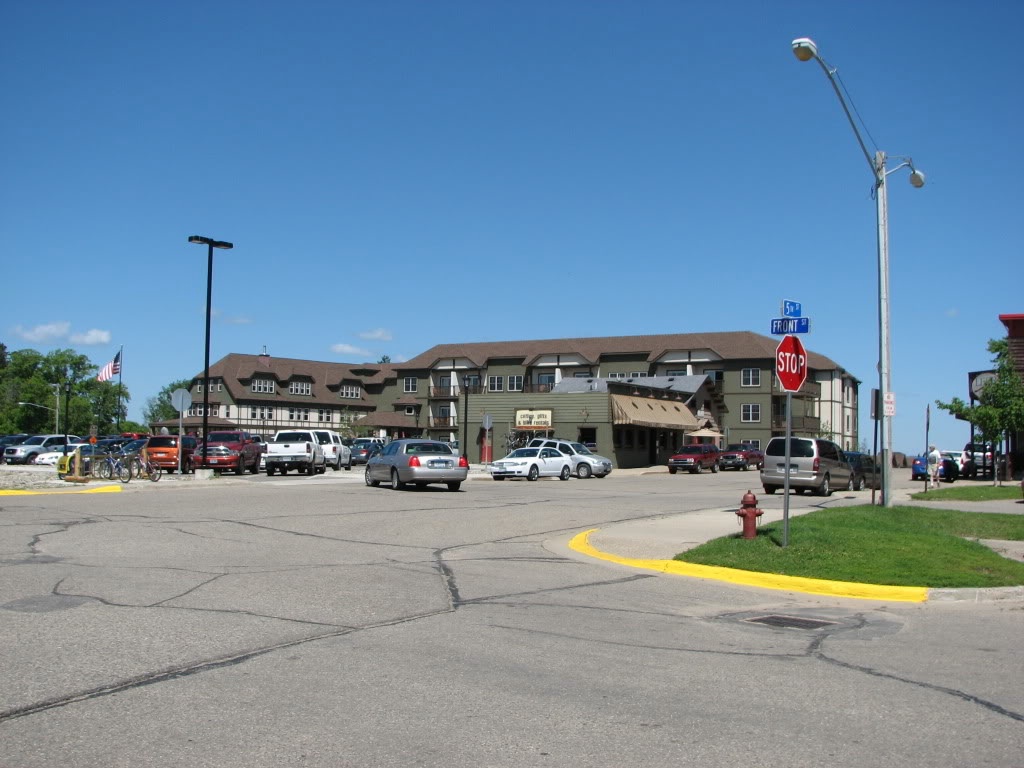 Housing organizations work with many different people including (but not limited to): city officials, county officials, service providers, consultants, and for profit entities partner to try and develop the best housing options for each area. These options include both rental and homeownership and can look very different within each community."
Housing organizations work with many different people including (but not limited to): city officials, county officials, service providers, consultants, and for profit entities partner to try and develop the best housing options for each area. These options include both rental and homeownership and can look very different within each community."
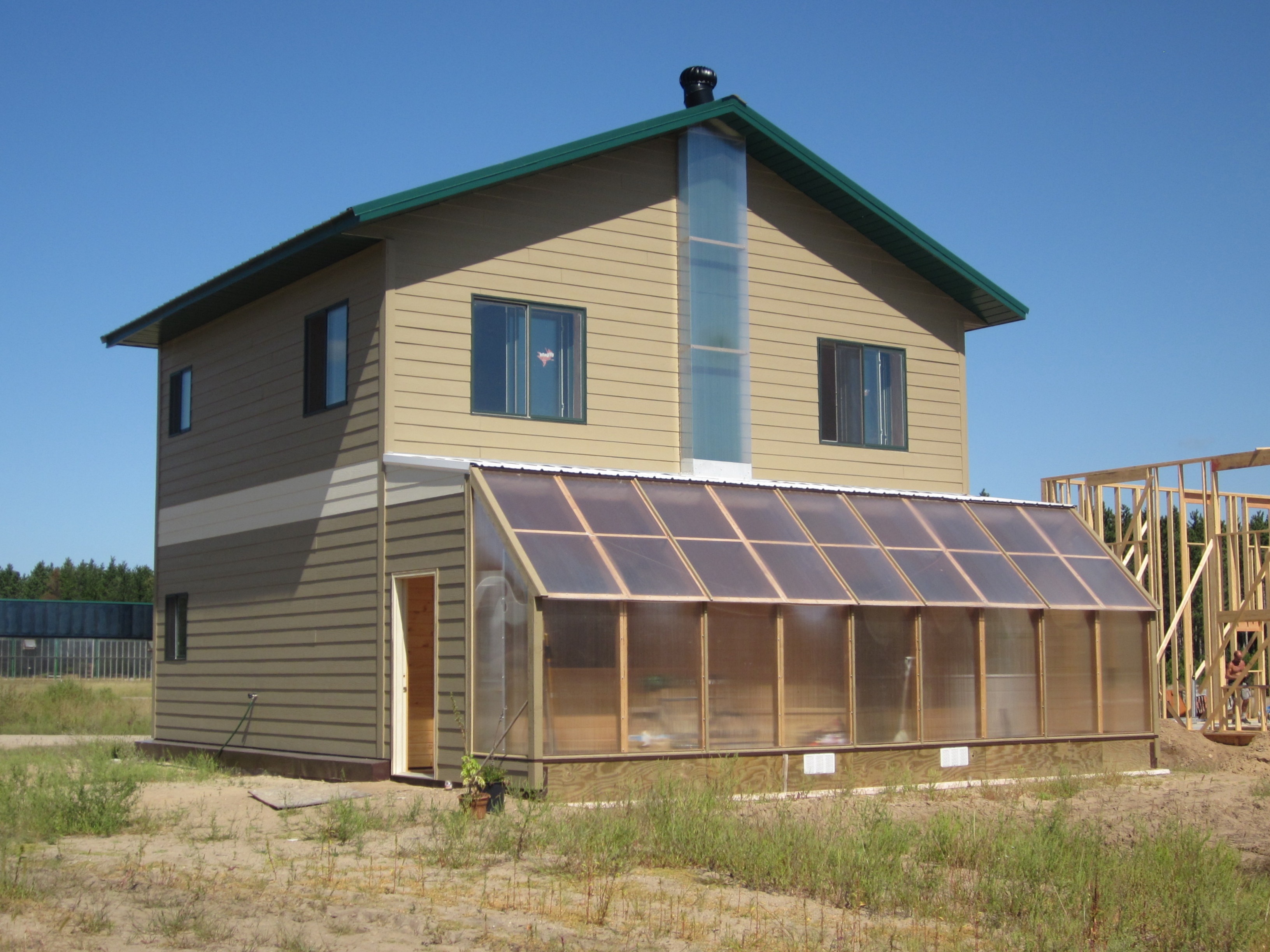 What is sustainable housing? In the resilient regional planning process, participants identified a number of pre-requisites to sustainable housing - these are homes that are energy efficient, located near employment centers, and which are built, or maintained, in a way that decreases the potential negative impact on the surrounding environment: lakes, rivers, and streams.
What is sustainable housing? In the resilient regional planning process, participants identified a number of pre-requisites to sustainable housing - these are homes that are energy efficient, located near employment centers, and which are built, or maintained, in a way that decreases the potential negative impact on the surrounding environment: lakes, rivers, and streams.
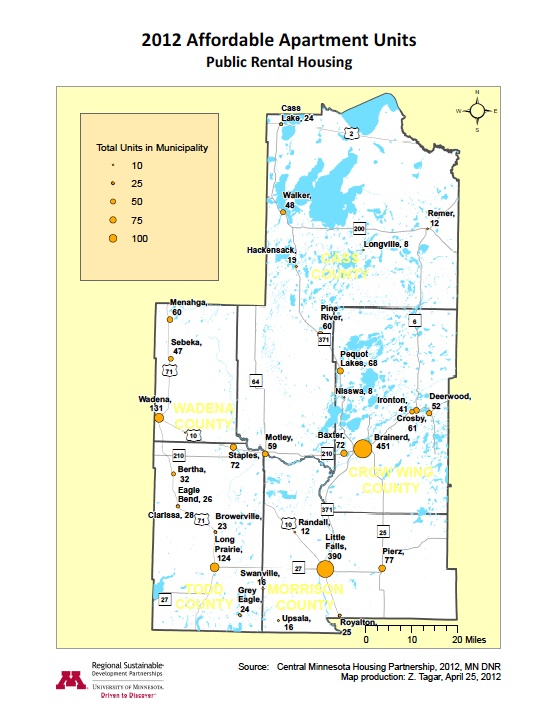 HOUSING RESOURCES
HOUSING RESOURCES
Renting options within the region can be found on the 2012 Affordable Apartment Units Map. This is a list of affordable housing options available to those within the 5 county region. Affordable rental options can vary depending on how the property was financed during the building of the project. Some projects have subsidies attached that only require that the tenant pay 30% of their income towards rent.
Homeownership is not always the best choice for all families. The best way to know what is involved with homeownership is to attend the Central Minnesota Housing Partnership's (CMHP) Home Stretch classes. Additional people involved with purchasing a home include: Realtors, lenders, home inspectors, insurance agents, closing companies and housing counselors.
When families already own their own home, fix up funds are sometimes needed to provide needed improvements. To help save money, owners can make energy efficiency improvements to their home to help reduce their energy bills throughout the year.
When available some organizations or lenders have down payment assistance or other programs to help homebuyers get into their home. This is always changing as organizations funds deplete. Knowing who to ask the right questions to is the key to finding out more about assistance.
The Resilient Region Plan
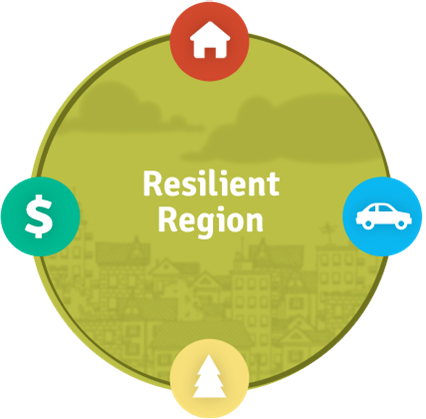 Table of Themes Cross Referenced with Principles & Source (Final Report Reference: Appendix B) provides greater detail regarding housing issues, goals, recommendations and action steps. (See Theme 1: Infrastructure - Housing and Theme 11: Valuing Interdependent Communities and Neighborhoods - Affordable Housing and the workgroup column with codes beginning with "H").
Table of Themes Cross Referenced with Principles & Source (Final Report Reference: Appendix B) provides greater detail regarding housing issues, goals, recommendations and action steps. (See Theme 1: Infrastructure - Housing and Theme 11: Valuing Interdependent Communities and Neighborhoods - Affordable Housing and the workgroup column with codes beginning with "H").
A requirement of the HUD/DOT/EPA grant was to conduct a Fair Housing Equity Assessment – FHEA (Final Report Reference: Appendix E-1). The FHEA was prepared by the Central Minnesota Housing Partnership (CMHP) with assistance from R5DC, University of Minnesota, and EnSearch.
The process used to map the FHEA may be found in Mapping the Process (Final Report Reference: Appendix A-24).
Affordable Housing Location Model This model was created by Zach Tagar to help the project determine where there was a need for affordable housing within the region (Final Report Reference: Appendix E-2).
William Mitchell Law School, U of MN CURA, and U of MN Law School students assisted the project in conducting a number of speciality studies and developing policy tools:
- The Model Comp Plan provides sample city and county policies to support affordable housing (Final Report Reference: Appendix I).
- A section of the Policy Toolkit provides a review of resources to: 1) encourage sustainable building standards, 2) capitalize on existing housing capacity within the region, 3) assessing regional housing needs, and 4) supporting regional solutions (Final Report Reference: Appendix H).
- The City Housing Policy Analysis was prepared by John Sisser, University of Minnesota Regional Sustainable Development Partnership. It includes a review of affordable housing policies for the cities of Long Prairie, Little Falls, Walker, Brainerd & Wadena (Appendix A-20f).
- Michael Dorfman, University of Minnesota Regional Sustainable Development Partnerships, analyzed the Cass, Crow Wing, Morrison, Todd and Wadena county housing policies (County Housing Policy Analysis, Final Report Reference: Appendix A-21g).
- Review of Local Zoning Ordinances for Housing Affordability Barriers was prepared by David J. Stellmach, Certified Student Attorney, with Diane Marie Dube, Supervising Attorney. It evaluates the zoning ordinances for barriers to housing affordability in 20 Region 5 communities (Final Report Reference: Appendix A-22d).
- Housing Barriers to Affordability, prepared by Susie Vang, Certified Student Attorney, and Diane Mare Dube, Supervising Attorney (Appendix A-22e), reviews typical barriers to housing affordability found in zoning ordinances.
- The Affordable Housing Ordinances memo identifies areas in the final comprehensive plan for affordable housing that need additional research. The memo was prepared by David H. Holt, Certified Student Attorney, and Diane Marie Dube, Supervising Attorney (Final Report Reference: Appendix A-22i).
To better understand housing priorities, strategies, issues, and solutions throughout Greater Minnesota, Minnesota Housing Finance Agency partnered with the Greater Minnesota Housing Fund and USDA Rural Development to carryout Regional Housing Dialogues (Final Report Reference: Appendix D-3).
For more information about affordable and sustainable energy efficient building resources contact our partners.
goals, recommentations and action steps:
Housing Issue I
Building standards: Encourage local units of government to voluntarily coordinate, develop and implement conforming technical guidelines, planning and zoning standards and ordinances.
The issue includes the promotion of green building standards such as the Minnesota Green Housing Criteria Overlay. Educating community members, particularly architects and contractors, on the benefits and best practices of green construction is integral to establishing and achieving cutting-edge building standards goals.
The issue also seeks to acknowledge the importance of local agriculture, the preservation of small farms and community supported agriculture (CSA) as it concerns policies such as zoning, agriculture-appropriate real estate taxation and development.
Housing Issue I Goal
Coordination of ordinances and standards: Review and coordination of existing ordinances and standards. Identify and catalog similarities and differences. Adoption of coordinated ordinances and standards by local units of government.
Housing Issue II
Infrastructure to support housing: The availability of suitable infrastructure is critical for communities and businesses. Many towns throughout the region face the financial burden of replacing sewer and water lines and/or wastewater treatment facilities. For many small towns with aging populations the cost is prohibitive. Seeking assistance from State and Federal sources is one possible avenue open to them.
Housing Issue II Goal
Drinking water and wastewater infrastructure: All housing is served by clean, safe drinking water and a functioning wastewater treatment system.
Housing Issue III Goal A
Growth patterns: 12,000 new homes across the region from a population increase of 8% with an average household size of 2.4 persons. People retire here and want to live near amenities so there is moderate lake shore development. There is an increase in affordable housing and jobs so young people return. People live near jobs so big towns grow some and small towns hold steady.
Housing Issue III Goal B
Redevelopment (infill/reuse): Increase of new housing units or commercial space built in previously developed spaces.
Housing Issue IV
Housing rehabilitation: Rehabilitation of housing focuses on current housing stock. Seniors with a fixed income may find it very costly to rehabilitate their home when necessary, so a “Continuum of Care” model should be adopted to accommodate seniors and their housing needs. Rehabilitation efforts should also focus on the significant foreclosed housing stock, which may be sold back to homebuyers at an affordable price with an affordable financing. Green technology relating to housing methods can play a role in this key issue.
Affordable Housing Issue
Affordable housing: This key issue includes rental and single-family housing: the need for physical development of affordable rental housing and affordable pricing and/or financing of single-family housing. Building design and green technology can play a major role in reaching these affordable housing goals. Homeless emergency shelters are a vital component of affordable housing, including the need for such a shelter to cover The region. Developing affordable senior housing is also a priority for this issue.
Affordable Housing Goal
Affordable housing: Develop affordable housing that meets the needs of individuals and families. This includes the need for stability and proximity to employment and community amenities, like schools, health care, and recreation. The percentage of lower income households spending 30% or more of their income on housing decreases from the current level of 45% to 33%. This decrease occurs because the region is willing to invest in affordable housing and because incomes increase due to better paying local jobs.
Housing Recommendations and Action Steps
indicators of success
|
Baseline |
Benchmarks for Success |
|
|
Housing affordability. Currently 45% of lower income households spend 30% or more of their income on housing. |
|
Affordable Housing.The percentage of lower income households spending 30% or more of their income on housing decreases from the current level of 45% to 33%. This decrease occurs because the region is willing to invest in affordable housing and because incomes increase due to better paying local jobs. |
|
|
Growth patterns.Current trends show that 12,000 new homes would be added, an increase of 18%, with the average household size of 2.4. |
|
Growth patterns. The region adds 12,000 new homes to accommodate the 8% population increase. The average household size is 2.4 people. Retirees want to live near the region’s amenities, leading to moderate lakeshore development, while young people are attracted by the increase in affordable housing and jobs. Because people want to locate near jobs, bigger towns see some growth while small towns stay the same. |
Telling our story
THE RESILIENT READER: Service Member Housing Done Resiliently
CHAMPION INTERVIEW VIDEO
Champion Jennifer Bergman, Executive Director, Brainerd HRA
CHAMPION REPORTS
Want to learn more? Interested in becoming involved with this work?
Contact Dawn Espe at Region Five Development Commission and she will put you in touch with one of the theme champions.
THEME CHAMPIONS
Jennifer Bergman, Executive Director, Brainerd HRA
Deanna Hemmesch, Executive Director, Central MN Housing Partnership
